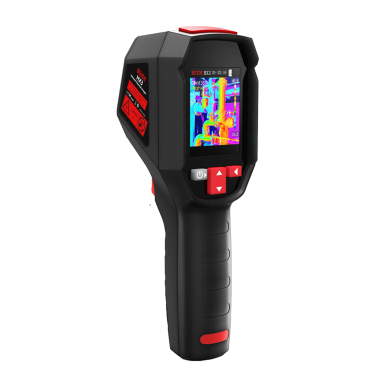
# Ear Thermometers: Accurate and Convenient Temperature Measurement
## Introduction to Ear Thermometers
Ear thermometers, also known as tympanic thermometers, have become increasingly popular in both medical settings and home use. These innovative devices offer a quick, non-invasive way to measure body temperature by detecting infrared heat waves emitted from the eardrum.
## How Ear Thermometers Work
The Science Behind the Measurement
Ear thermometers utilize infrared technology to measure the thermal radiation coming from the tympanic membrane. This area closely reflects the body’s core temperature because the eardrum shares blood supply with the hypothalamus, the body’s temperature control center.
Proper Usage Techniques
For accurate readings, it’s essential to:
- Gently pull the ear upward and backward (for adults) or straight back (for children) to straighten the ear canal
- Insert the probe snugly into the ear opening
- Press the measurement button and hold steady until the reading appears
## Advantages of Ear Thermometers
Speed and Convenience
Most ear thermometers provide readings in just 1-3 seconds, making them ideal for restless children or when quick measurements are needed.
Hygienic and Non-Invasive
Unlike oral thermometers, ear thermometers don’t require contact with mucous membranes, reducing the risk of cross-contamination. Disposable probe covers further enhance hygiene.
Accuracy When Used Correctly
Modern digital ear thermometers can provide measurements accurate to within 0.2°F (0.1°C) of core body temperature when used properly.
## Choosing the Right Ear Thermometer
Keyword: Ear Thermometers
When selecting an ear thermometer, consider:
- Measurement speed
- Memory function for tracking temperature trends
- Backlit display for nighttime use
- Age-specific modes (some models adjust calculations for infants vs. adults)
- FDA clearance or other regulatory approvals
## Limitations and Considerations
Potential Sources of Error
Factors that may affect accuracy include:
- Earwax buildup
- Improper probe placement
- Recent exposure to extreme temperatures
- Ear infections or abnormalities
Not Suitable for All Ages
Most manufacturers recommend ear thermometers for children six months and older, as infant ear canals may be too small for accurate readings.
## Maintenance and Care
To ensure optimal performance:
- Clean the probe tip according to manufacturer instructions
- Replace probe covers regularly
- Store in a clean, dry place
- Check battery status periodically
## Conclusion
Ear thermometers offer a reliable, convenient solution for temperature monitoring in both clinical and home environments. When used correctly and maintained properly, they provide fast, accurate readings with minimal discomfort. As with any medical device, following manufacturer instructions and understanding the limitations will ensure you get the most accurate results possible.